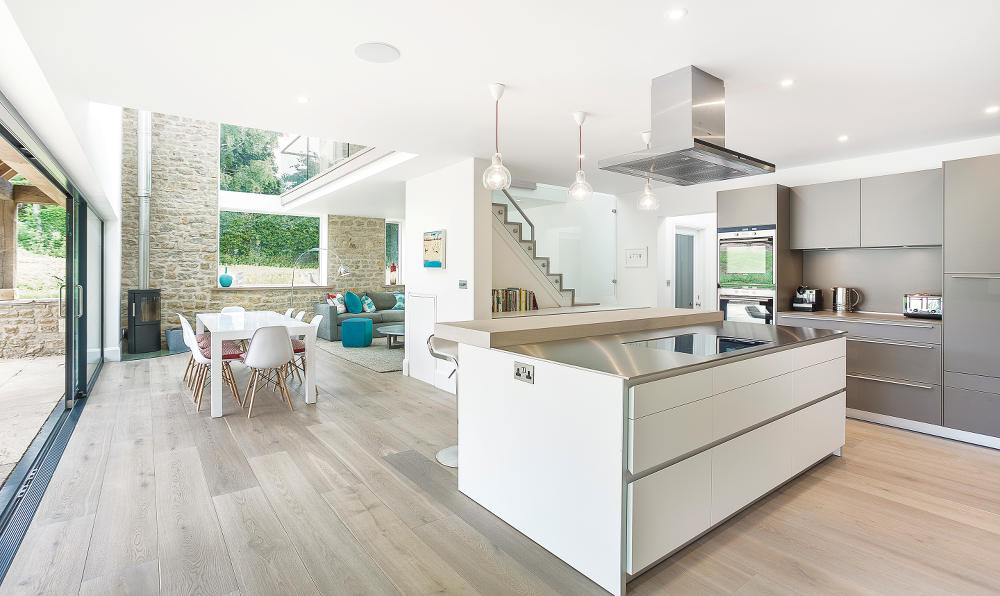
Working With An Interior Designer
If you’ve ever thought about calling in an interior designer, but don’t know where to start, here’s the answers to all your burning questions. We asked Gilly Craft, president of the British Institute of Interior Design (BIID) more
Why would I hire an interior designer?
For some, it’s the advantage of having a design professional lead the entire process, whether that is a room or an entire house, whilst others just need help figuring out how to achieve a desired style or look. An interior designer will approach the project with fresh eyes, they can help solve problems and look at ways to enhance a space.
Where do I start?
Before approaching prospective designers, it can be helpful to look through magazines or browse Pinterest to find design inspiration that reflects what you are trying to achieve. Creating a mood board with fabrics, colours, textures and images of rooms or pieces of furniture you love will help to showcase your tastes, which in turn will help the designer when planning design schemes or selecting pieces for the home.
Consider whether there is a piece of furniture or artwork that you want to structure the room around, or perhaps a focal point that can influence the scheme of the room. This can be a great source of inspiration and can help bring the entire look together.
A great way to find an interior designer is to speak to friends, seek recommendations from colleagues and ask around. Some are members of the British Institute of Interior Design, which means they meet a high set of professional standards and have the correct insurances in place. There is a finder service on our website www.biid.org.uk
Research a prospective list of designers appropriate to your project. Some specialise in areas such as period properties or sustainability.
Before talking to your shortlist of designers, write down what you wish to achieve, what your budget is and any important information on timeframe or other special project requirements. The answers to these questions form the basis of the brief, which once defined, will become the basis for the contractual agreement between you and your designer.
How do I choose an interior designer?
Always meet with a prospective designer before signing a contract to make sure you can communicate well with them. It sounds simple, but it’s extremely important to build a good rapport with your interior designer and that they understand your requirements from the very beginning of the project.
Ask to look at examples from previous projects, prospective designers will be happy to provide photography or client testimonials. This will allow you to learn about the designer and whether they would be a good fit for your project.
It should be a collaborative process so you want to feel confident about expressing your opinions. That said, you should also feel you can trust their opinions. Keep an open mind – they have a wealth of expertise and they will be up to date on all the latest design trends. Listen to their recommendations on materials, colour or layout, as it may help to see the space in a different light.
What will it cost?
It varies hugely but always set a clear budget from the outset, know what you have to spend and communicate this clearly with the designer. It also depends on whether you want a design-only service or a complete implementation service whereby the designer acts as project manager, overseeing the work to the end. Find out how they subcontract out to tradespeople and who is responsible for their work.
Ask any prospective designer to explain how they cost a project. As there is no standard for charging for interior design services, we encourage all BIID Members to be transparent about their fee structure; for example, whether they have an hourly rate or if there is a fixed charge for the whole project. If it is per hour, set a “ceiling” on it or agree an estimate.
A professional interior designer knows how to obtain goods that are unique to the project and often at a better price point than the public can, so you can end up saving money.
A clear brief should be agreed upfront and then a detailed proposal with transparent costs should follow so all parties are clear on how and when the project will be achieved and what it will cost.
Always build in a contingency in case the project throws up the unexpected, particularly in period properties.
Anything else I should know?
Any form of renovation and redecoration can be stressful so while professionals will keep disruption to a minimum, patience is key. Ultimately though, enjoy the process as a new home or room evolves. A good interior designer is a facilitator, creating a space that is exactly tailored to your lifestyle and your tastes.






